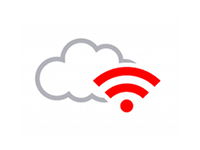

|
"The Internet of Things promises to bring every object, consumer and activity into the digital realm.
"
- Paul Daugherty, Accenture CTO
|

|
The next step in connectivity is a paradigm where computers, phones, embedded devices,
cameras, sensors, meters, vehicles, utilities, infrastructure, the biosphere, people,
and a whole lot will be somehow connected through some network.
Anything that can be connected, will be connected. There will be several reasons for doing so,
both for consumers and for businesses. Business could gain advantage by providing new products and
services, revamping their old services, generating and/or consuming more data, using analytics to
direct marketing campaigns, collecting valuable business intelligence, increasing productivity
of plants and offices, automatically reordering supplies, enhancing logistics and supply chains, and so forth.
At its most peripheral level, such connectivity is often termed as the Internet of Things (IoT).
Radio Frequency Identification (RFID) and sensor network technologies are two of its primary enablers.
The result of such connectivity will produce huge amounts of (big) data, requiring the use of
substantial storage technology innovations and expenditures.
The network will also serve as the conduit for innovative services for people and businesses.
The resulting data would require storage, monitoring, analytics and visualization.
Cloud computing technology can provide the infrastructure for hosting services and processing data.
The access to such data will be virtually ubiquitous.
Security and privacy will remain important concerns.
In order to reap the benefit of this trend, and to thrive in it, businesses will need to
take a look at their existing processes and identify areas for improvement.
Networking "things" as part of the holistic infrastructure strategy fits well within the framework of
adaptive IT architectures and methods.
For example, agile methods and cloud-based infrastructure can help with iterative rollouts to meet
the connectivity needs in an incremental fashion.
From an alternate point of view, having access to useful data through the right connectivity
also helps a business become more agile in its function.
Examples include improved sensing and tracking of its manufacturing, shipments, customer feedback,
and user habits.


© Copyright 2003-2018 Adaptive Enterprise Inc. - All Rights Reserved
|



